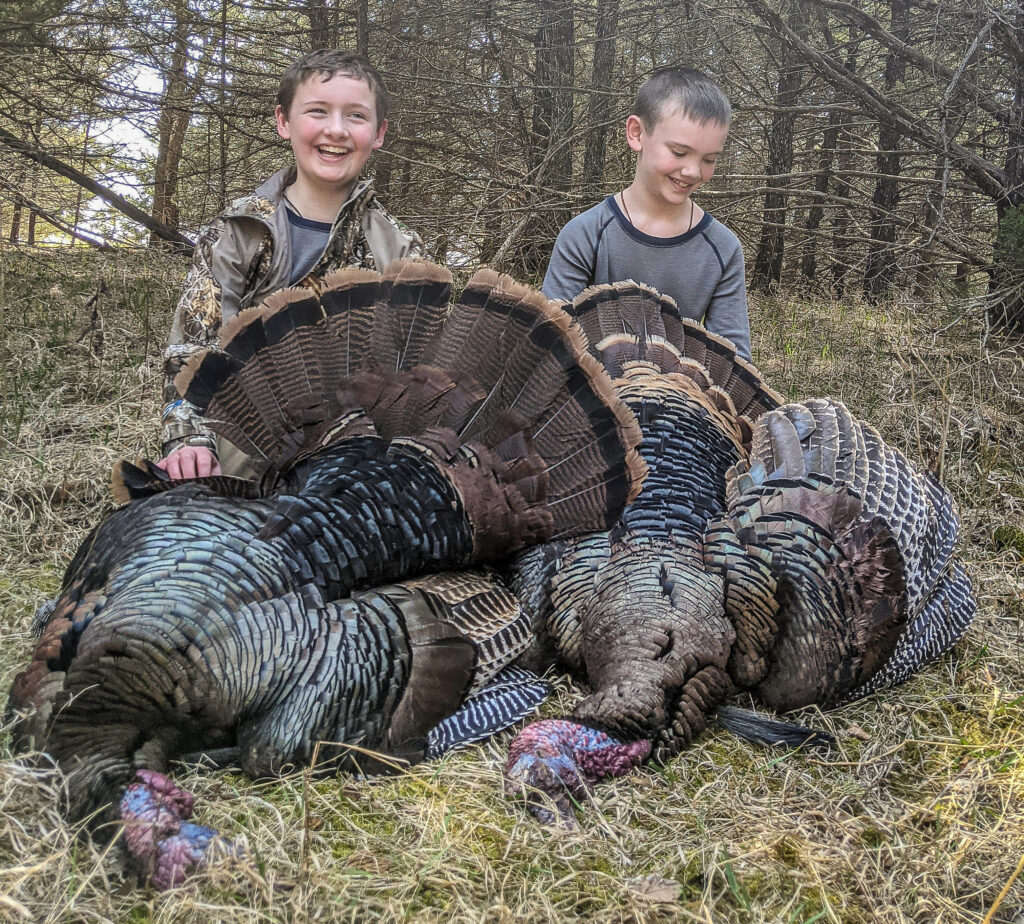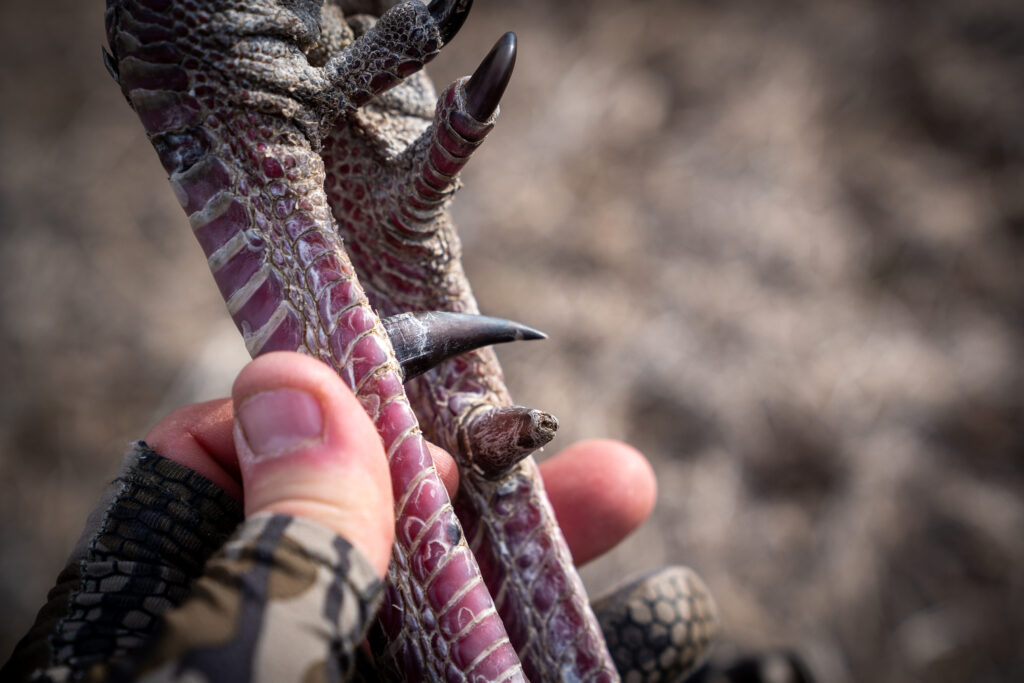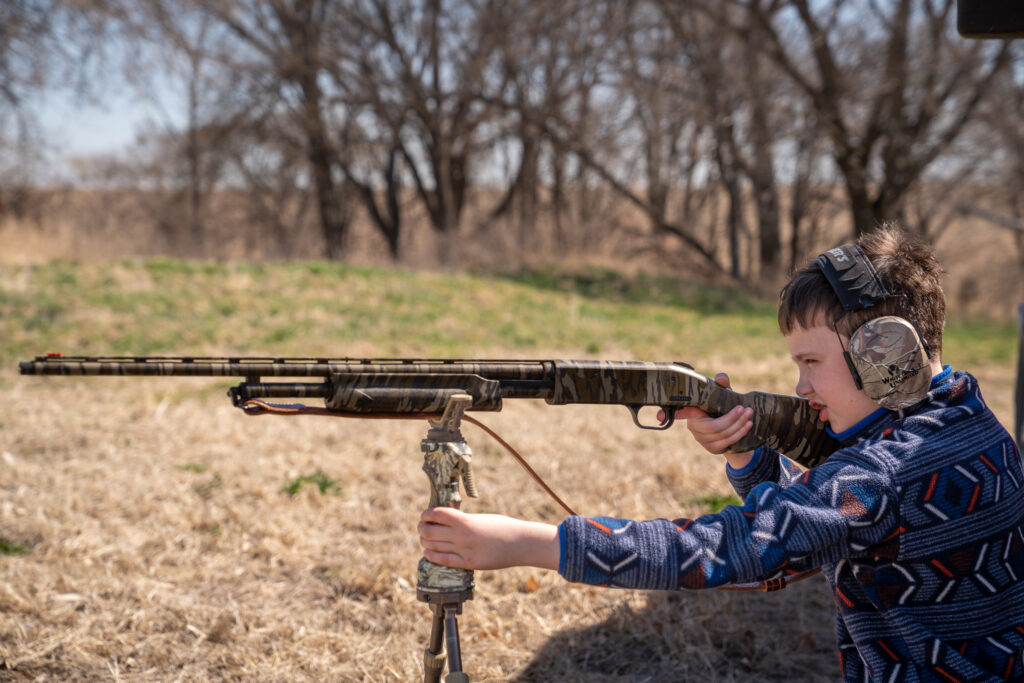A New Family Tradition
*This is not an advertisement for any firearm or firearms product, but is intended as an educational article regarding youth turkey hunting*
Wild Turkeys Are Perfect For Young Hunters

By Ryan Sparks
Three years ago, I started taking my nephews turkey hunting on our family farm during Nebraska’s youth season. Now, our turkey hunt is an annual family tradition.
I’ve learned a few tricks to keep my young nephews, Cole (13), Abe (10), and Luke (9) Lovewell, excited and engaged. I’ve also become a firm believer that turkeys are the ideal quarry to teach kids patience, woodsmanship and the joys of hunting.
Turkey hunting is ideal for young hunters for several reasons. Spring turkey hunts usually take place when the weather is warm and comfortable. Spring is also the mating season for wild turkeys, with males gobbling and strutting to posture for dominance. This mating behavior teaches kids that understanding the social behavior and habits of animals is an important aspect of hunting.
Finding tracks, scratching, dusting bowls and roost locations, young hunters also learn how to read and interpret sign. Moreover, kids like to move, and turkey hunting keeps them on their feet, moving from place to place in search of a tom. Lastly, I’ve never met a kid (or adult) who doesn’t enjoy a plate of fried turkey nuggets.

While turkey hunting is perfect for a developing hunter, kids are kids, and I’ve learned to keep our hunts fun. Until a young hunter can sit still for a long time, blinds are crucial. However, don’t make the mistake of setting up a blind and forcing them to stay there for hours.
I put out a handful of popup blinds before the season opens, and we move from blind to blind throughout the day to keep things fresh. I also create several natural blinds by sawing limbs and cutting cedar branches. These blinds feel more like forts and having my nephews cut a few branches to add to the blind makes them feel part of the hunt. I also carry a backpack with a smaller three-panel blind for when we hear a gobbling tom but don’t have a blind nearby.
Let the kids help place decoys and call (at select times). You can also have them carry decoys and their unloaded shotgun, so they feel like they are part of a hunting team rather than a burden. If possible, let them choose the places to stop and call or the blind to sit in next.
When their interest starts to wane, call it a day. Make it fun and don’t push them too hard. Help them learn that staying in the field, even when things are slow, is an important aspect of hunting.

Snacks are an underrated piece of “gear” during these hunts. You will have plenty of downtime in a blind, and this is a prime opportunity to get out some snacks and tell stories of past hunts. Use these stories to teach them about safety, conservation, the habits of the animal you are pursuing, and why we hunt.
Well before the hunt, have the kids shoot target loads, as opposed to more expensive turkey loads. Set up the blind and have them shoot from it like they will on the hunt, whether that’s sitting in a chair or shooting off a bipod.
It’s also a good idea to watch turkey hunting videos together so they will have an idea of what will happen in the field. Pause the video and ask them what they would do next or where they would aim on the turkey.
Finally, all successful hunts should celebrate the game with a meal from the animal. You can’t go wrong with fried turkey nuggets and French fries. Even a simple meal teaches young hunters that eating what you kill is a central aspect of hunting.
Ryan Sparks is Associate Editor of Safari Times and SAFARI Magazine.
Choosing the Right Gun and Load

It is vital to set kids up for success before the hunt and that means having a shotgun that they are comfortable handling.
A .410 shotgun is a great option for getting kids into the turkey woods before they can handle the kick of a larger gun. With the introduction of Tungsten Super Shot, ethical shots with a .410 extend out to 40 yards. TSS is over 50% denser than lead, doubling the downrange energy and allowing hunters to drop three shot sizes with equal lethality. Dropping shot sizes also means more pellets in each shell.
TSS shells can be expensive, with some manufacturers selling boxes of five shells for over $40. But how many times is a young hunter going to shoot during a turkey season? If you practice with target loads and save TSS shells for hunting, an extra $10-20 a season is worth it to give kids an advantage in the turkey woods. —RS
These stories were originally published in the May 2023 edition of Safari Times.

